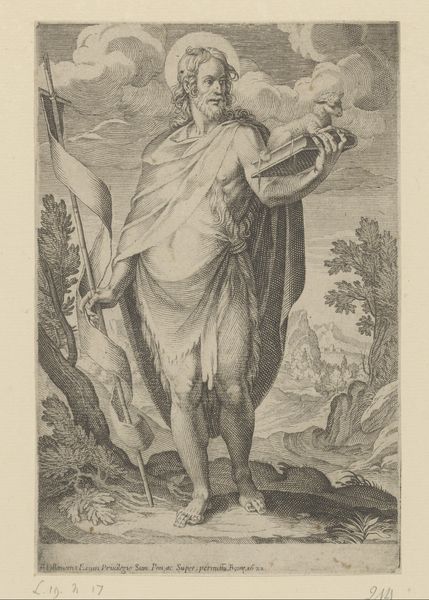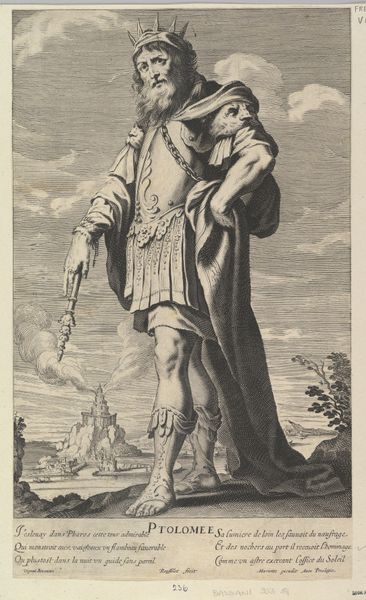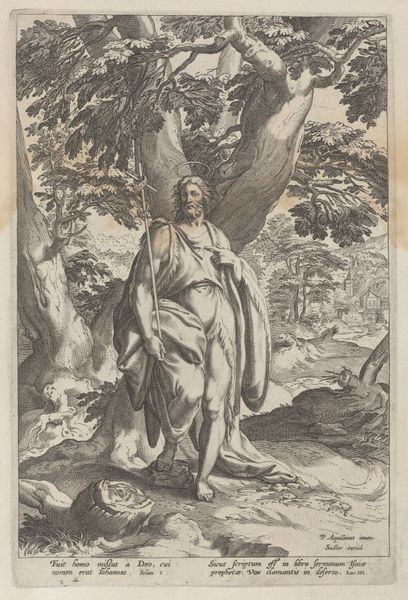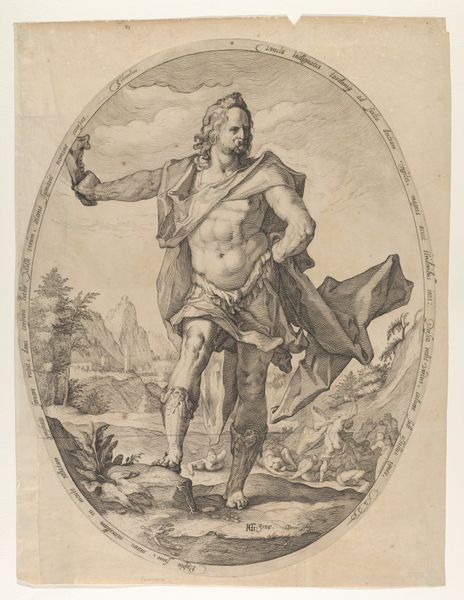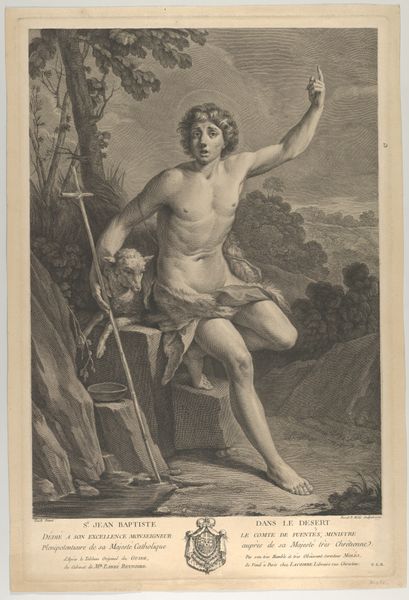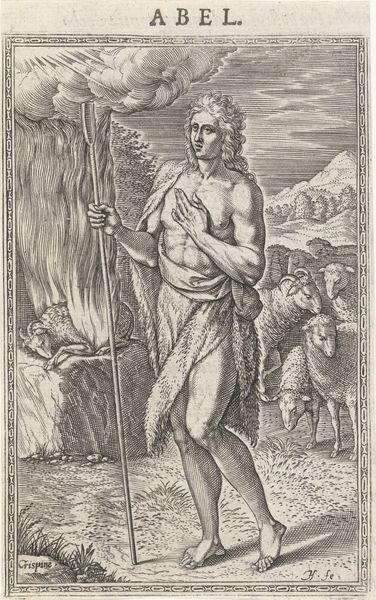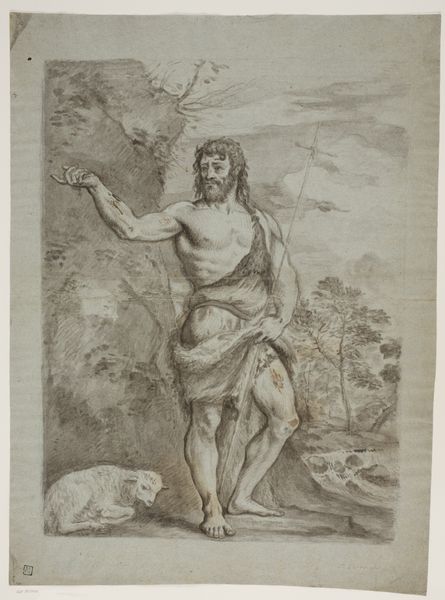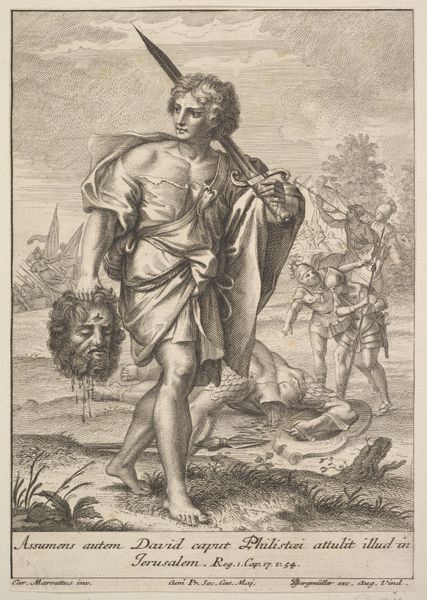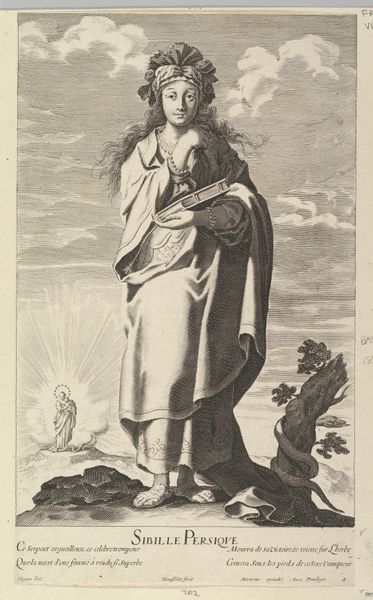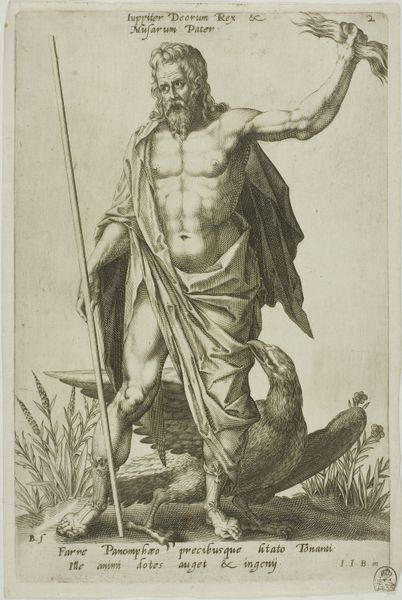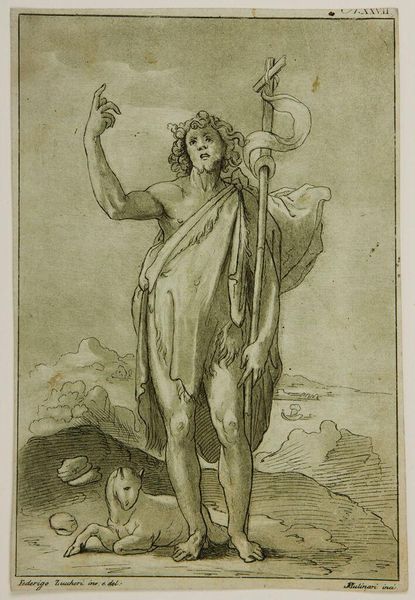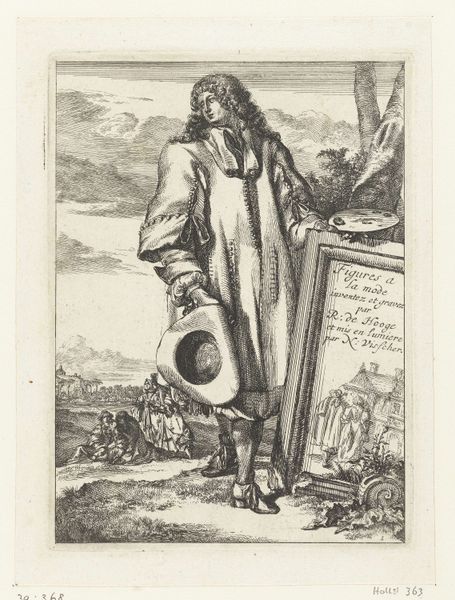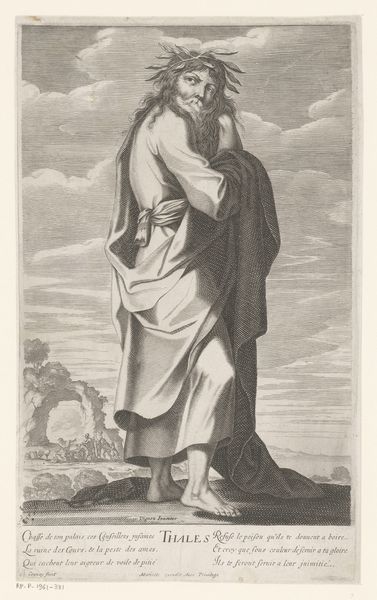
engraving
#
baroque
#
old engraving style
#
landscape
#
figuration
#
history-painting
#
engraving
Dimensions: height 464 mm, width 326 mm
Copyright: Rijks Museum: Open Domain
Bon Boullogne created this print of John the Baptist in the wilderness sometime between 1649 and 1717. Clothed in animal skins, John stands as a beacon of spiritual reform. In his left hand, he carries a staff topped with a crucifix and a banner calling for repentance. The image of the saint is both a potent symbol of religious conviction and a fascinating example of how symbols evolve across cultures. Consider John's raised hand, a gesture of address and benediction, reminiscent of ancient orators. This symbol, a universal call for attention, reappears in countless contexts, echoing through time. Think of the Winged Victory of Samothrace, her raised arm—now missing—once conveyed triumph and leadership. The motif has morphed over centuries, taking on new layers of meaning. It has become a visual shortcut for authority, guidance, and divine favor. In Boullogne's print, this gesture, combined with John’s stern gaze, serves as an emotional bridge, inviting viewers to reflect on their own spiritual paths. We see here not just a depiction of a biblical figure, but a symbol that continues to resonate, demonstrating how cultural memory and inherited symbols shape our understanding and emotional experience of art.
Comments
No comments
Be the first to comment and join the conversation on the ultimate creative platform.
